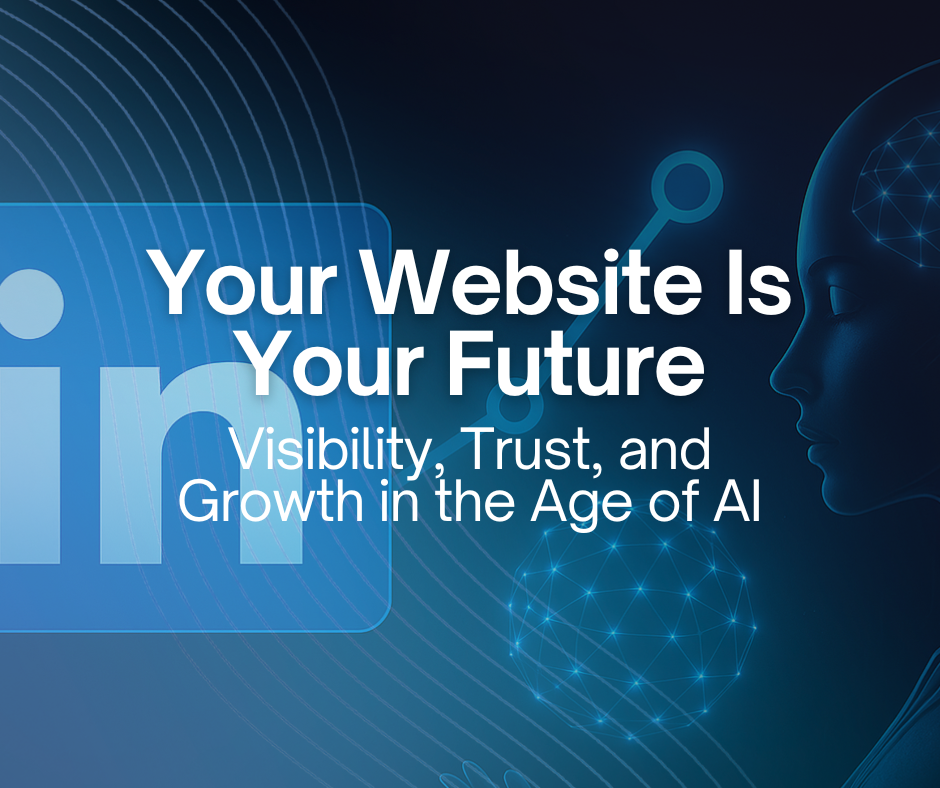In a world where digital tools evolve by the hour and new platforms seem to rise and fall every few months, it’s easy to wonder: Does a website still matter?
The answer — now more than ever — is yes.
In 2025, your website is not just an online business card. It’s your digital headquarters, your brand’s foundation, and the only online space you truly control. While social media, messaging apps, and marketplaces all play important roles in your digital presence, they are borrowed stages. Your website is the one stage where you set the lights, the tone, and the message — entirely on your terms.
More importantly, it’s where critical decisions happen. Your potential clients aren’t just visiting your homepage — they’re evaluating your credibility, scanning for clarity, and subconsciously deciding whether they trust you. They may land there after seeing a social post, a Google result, or even a reference inside a tool like ChatGPT. Which brings us to a crucial point: artificial intelligence is now part of the discovery process. And AI tools rely on your website — not your posts — to understand and recommend your business.
But here’s what many companies get wrong: simply having a website isn’t enough. It’s about building a digital space that reflects who you are, speaks clearly to your audience, functions beautifully on mobile, and is optimized for both humans and machines. It must feel intuitive, relevant, and real.
This article brings together everything your website needs to do in 2025 — and how to make sure it’s not just “online,” but actually working for you. We’ll explore how clarity drives lead generation, why content is your most powerful asset, how AI is already interacting with your site, why trust is the new currency of conversion, and how to move beyond what your competitors are already doing.
Because in a landscape where visibility is automated and decisions are fast, your website isn’t optional.
It’s your anchor.
Lead Generation Starts with Clarity
Lead generation is not about chasing attention — it’s about creating alignment. In 2025, businesses that generate consistent, qualified leads aren’t always the ones with the most followers or paid ads. They’re the ones with clear, high-converting websites that make it easy for the right people to say “yes.”
Let’s start with what clarity really means. It’s not about saying more — it’s about saying what matters, quickly. When a user lands on your homepage, they shouldn’t need to dig or decode your message. A clear headline, a confident value proposition, and a logical customer journey are what move people from curiosity to action.
At WiFi Digital, we work with clients to refine their messaging and structure using proven conversion optimization principles. We evaluate whether their content flows logically, if calls to action are placed with intention, and whether the user experience feels effortless. Because when a website confuses, it loses.
A well-structured, modern site supports lead generation by guiding the visitor with ease. Clear menu navigation, visual hierarchy, and concise copy help people find what they need — and make them feel understood in the process. And when people feel seen, they convert.
Your digital marketing strategy should treat your website like a central conversion engine. Each page should serve a role: educating, qualifying, nurturing, or closing. When you design with clarity in mind, every section becomes part of a broader funnel — from awareness to decision — even if you’re not using traditional funnels.
And let’s not forget the power of frictionless calls to action. Whether it’s “Book a call,” “Download the guide,” or “Start your project,” your CTA should be visible, meaningful, and emotionally relevant. If a user hesitates, they’ll likely bounce — not because they weren’t interested, but because the next step wasn’t clear.
A high-converting website doesn’t push. It invites. It reassures. It eliminates resistance by answering the right questions at the right time, using language that resonates.
In short: the first step to generating leads is not more traffic. It’s more clarity.
When your message is precise, your structure is intentional, and your user journey is simple — you don’t chase leads.
You attract them.
Content Is How You’re Found — and Remembered
Content is no longer optional — it’s the lifeblood of digital visibility. In a landscape where people search for everything before they buy, your business won’t be found by chance. It will be found because you consistently publish useful, intentional, and well-structured content. In 2025, content marketing is what powers discovery, relevance, and long-term trust.
Let’s be clear: SEO content isn’t about stuffing keywords or chasing trends. It’s about answering real questions your audience is already typing into search bars — or asking AI tools like ChatGPT and Google SGE. The better your content aligns with those needs, the more likely your brand is to appear organically in search results.
A smart blog strategy serves multiple purposes. It drives website traffic, strengthens search engine ranking, and builds brand authority. But even more than that, it positions you as a reliable voice — someone worth listening to and coming back to.
The beauty of content is that it compounds. A blog post written six months ago can still bring in leads today. A case study can still convince a future client. A well-written article can be cited by generative AI tools long after you publish it. Unlike social media, which disappears fast, your website content stays searchable and useful — 24/7.
Your content should live at the intersection of usefulness and personality. Teach with depth. Explain with empathy. Infuse your values and tone into your writing. This is where thought leadership comes in — not just sharing information, but creating insight.
If your competitors are already publishing, going beyond means creating better. More strategic. More human. Add structure with clear headings, FAQs, and meta descriptions. Offer clarity through storytelling. Speak directly to the problems your audience is trying to solve — and become the solution they didn’t know they needed.
Don’t underestimate how this affects visibility. Google’s algorithms favor helpful, original content. And AI platforms pull from indexed websites to generate responses. If your expertise isn’t published, it’s not just unread — it’s unknown.
Content doesn’t just attract. It positions. It builds bridges between questions and your offer — between your values and their needs.
So don’t just post. Publish with purpose. Because in the world of organic visibility, your content is your voice — and your voice deserves to be found.
AI Isn’t the Future — It’s Already Reading Your Site
Artificial Intelligence is no longer a futuristic concept — it’s an active gatekeeper of digital discoverability. Tools like ChatGPT, Google’s Search Generative Experience (SGE), and voice assistants are already scanning, summarizing, and recommending content — and they’re pulling from what your website makes available. If your site isn’t optimized and indexed, you’re not just invisible to your audience — you’re invisible to the systems they trust to find answers.
Here’s the reality: AI search is trained on live, public content. It prioritizes structured, relevant, and updated information to respond to user queries. That means if your business doesn’t publish consistent, high-quality content, it simply won’t be included in the “learning data” that tools use to generate results.
At WiFi Digital, we guide clients through creating a truly AI-ready website — one that speaks clearly to both humans and machines. That includes using structured content, schema markup, FAQ sections, and strategic headings that improve both readability and website optimization.
It’s no longer enough to write a great About page or have static service descriptions. Your authority must be active. Regular blogs, case studies, and knowledge pages demonstrate that your brand is informed, engaged, and reliable — which is exactly what generative AI looks for when choosing what to cite or recommend.
And let’s not forget: AI doesn’t “favor” brands. It favors clarity. It favors relevance. If your competitor has similar services but stronger structure, better keyword alignment, and more content diversity, AI tools will recognize and prioritize them first.
This changes how we think about AI and SEO together. It’s not about hacking an algorithm — it’s about becoming part of a global, intelligent network of verified knowledge. And the entry ticket is your content, your structure, and your site’s ability to communicate value with precision.
So while many brands are still “waiting to figure out AI,” those who prepare now will be the ones showing up first — in answers, recommendations, and curated lists generated by smart systems.
The takeaway? You’re not just writing for leads anymore.
You’re writing for machines that help people decide who to trust.
And they’re already reading your site.
Digital Trust Is the New Currency
Trust has always been at the center of business relationships — but in today’s digital landscape, it’s also the starting point. Before a user books a call, downloads a resource, or submits a contact form, they’re asking a silent question: Can I trust this? And in 2025, your website is answering that question — with or without your awareness.
At WiFi Digital, we’ve seen that digital trust is no longer just about testimonials or 5-star reviews. It’s about the feeling your website gives in the first five seconds. The design, the tone, the clarity — all these elements contribute to an immediate perception of professionalism, competence, and credibility.
Websites that inspire trust share a few common qualities. They are fast-loading, mobile-responsive, visually aligned with the brand, and free of errors or outdated content. These are what we call trust signals — the subtle indicators that tell users “this business is real, active, and reliable.”
But trust isn’t only visual. It lives in the user experience. Clear navigation, honest copy, consistent messaging, and transparent calls to action all help users feel safe. When people sense confusion, manipulation, or vagueness, they don’t complain — they simply click away.
And now, online reputation extends beyond human behavior. Search engines and AI systems are also measuring trustworthiness through content freshness, security certificates, domain authority, and clarity of purpose. A site that feels abandoned, bloated, or unstructured will be deprioritized — both in search results and in AI recommendations.
We guide our clients to build website credibility layer by layer — through visual consistency, up-to-date case studies, real images, and testimonials that feel authentic. But we also help them infuse their brand tone with transparency and intention. That’s where emotional resonance meets conversion.
Because here’s the truth: people don’t convert just because your offer is good. They convert because they trust you to deliver it.
The modern conversion rate isn’t driven by persuasion — it’s driven by trust. And trust is earned through clarity, presence, and emotional safety.
So, ask yourself honestly:
Is your digital presence making it easy to believe in you?
Because today, trust converts faster than any funnel.
What Your Competitors Are Already Doing — and How to Go Beyond
Let’s be honest — the online space is crowded. Most of your competitors already have websites, decent branding, and some level of SEO. They’re publishing content, optimizing pages, and using the same language you might be. In 2025, simply “keeping up” isn’t enough. If you want to be remembered, referred, and ranked, you have to go beyond what’s expected.
At WiFi Digital, we study the digital footprints of countless businesses — not to copy them, but to understand what creates true competitive advantage. And what we’ve found is that most companies stop at the basics: launch a site, add a blog, toss in a few keywords, and hope for the best. But that approach creates noise, not presence.
To go further, your website strategy must be integrated and intentional. It’s not just about having a website — it’s about building a scalable website that adapts to your growth, aligns with your brand voice, and speaks directly to your ideal audience.
The brands that are standing out now are those who combine SEO best practices with clear emotional messaging. They understand that digital positioning comes from consistency: publishing valuable content regularly, optimizing every page for clarity and action, and reinforcing trust across all touchpoints.
And while your competitors may focus on “looking professional,” you can focus on brand differentiation. That means using your tone, story, and point of view to create a website that actually feels different — not just looks polished.
It also means unifying systems. Connecting your blog to your lead magnets. Using your testimonials inside landing pages. Designing with intention so that every section works toward a goal. That’s how you create a content strategy that doesn’t just inform — it converts.
Finally, don’t forget the role of online visibility powered by AI. Your competitors might be building for Google, but you can build for both search engines and the AI systems that are reshaping how people find answers. That’s the next level — and it’s already here.
The truth is, the digital bar is higher.
But that’s not a problem — it’s an opening.
Because when others are following formulas, you have the chance to lead with presence, precision, and purpose.
Your Website Is the Beginning — Not the End
If there’s one message to take from this entire conversation, it’s this: your website is not a finished product. It’s a living asset. And in 2025, it plays a central role not only in how you’re seen, but how you’re found — by real people, search engines, and intelligent systems that shape what the world sees.
This isn’t about perfection. It’s about presence. When your website is clear, structured, updated, and aligned with your brand voice, it becomes a tool of attraction — not just decoration. It builds trust, it captures leads, it positions your expertise, and it prepares your business to compete in a search-first, AI-enhanced economy.
But remember: your digital authority isn’t built in one place. While your website is your anchor, platforms like LinkedIn are powerful amplifiers. Search engines and AI tools — including ChatGPT — increasingly scan public profiles, articles, and company pages to evaluate professional credibility and context. That means your LinkedIn presence is also being read, indexed, and learned from.
So if you’ve optimized your site but left your LinkedIn dormant, you’re missing a critical layer of discoverability. Your future clients — and the AI systems that guide them — are paying attention there too.
That’s why we don’t just build websites at WiFi Digital. We help businesses build ecosystems. Interconnected, consistent, emotionally resonant digital spaces that reflect who you are, what you do, and what you stand for.
And we invite you to experience that for yourself.
🔗 Visit our website: www.wifidigital.ca
💼 Connect with us on LinkedIn: WiFi Digital on LinkedIn
We share resources, insights, and real conversations about digital strategy, SEO, content, AI visibility, and how small businesses can grow online with clarity and soul.
Because at the end of the day, this isn’t just about code or content.
It’s about creating a presence that works — for you, your audience, and the future that’s already here.
You don’t need to be everywhere.
You just need to be in the right place — saying the right thing — when it matters most.
And that begins with being ready to be found.
WiFi Digital: Connecting Businesses to the Digital Future
In today’s fast-paced world, where a strong digital presence is essential for business growth, WiFi Digital emerges as a strategic partner for small and medium-sized businesses (SMBs). Founded in 2023 and based in London, Ontario, the company has a clear mission: to provide affordable, high-quality solutions that help businesses thrive online. With an experienced and passionate team, WiFi Digital goes beyond simply creating websites and marketing strategies. Its purpose is to empower entrepreneurs, strengthen brands, and give clients more free time to focus on what truly matters – growing their business and improving their quality of life.
WiFi Digital develops websites that authentically and professionally represent your brand, optimizes systems and digital marketing strategies to enhance visibility and return on investment (ROI), and offers affordable, customized solutions, ensuring that businesses of all sizes have access to effective growth tools. With transparency, partnership, and innovation, the company provides each client with the necessary support to achieve real results.
Business digitalization is not just about numbers or metrics. It directly impacts entrepreneurs’ well-being, bringing more organization, efficiency, and freedom to focus on what truly matters. WiFi Digital understands that by investing in digital solutions, businesses gain time, reduce operational stress, and create opportunities to connect better with their customers. A well-structured online presence not only increases sales but also strengthens the public’s trust in the brand.
Beyond technical expertise, WiFi Digital’s key differentiator is its commitment to people. The company values genuine relationships, creates tailored strategies, and works side by side with clients to ensure that every solution meets their specific needs. If you’re looking to boost your brand, attract more customers, and still have more time to focus on what truly matters, now is the time to act!
💡 Transform your digital presence with experts who understand your needs.
📩 Contact us now: contact@wifidigital.ca
🌍 Learn more: www.wifidigital.ca
🚀 Your growth starts here!
F.A.Q
1. Why is having a website still important in 2025?
Because your website is the only digital space you fully control. In a world where algorithms, platforms, and trends shift rapidly, a well-structured website anchors your brand and gives you lasting visibility across search engines and AI platforms.
2. What makes a website more than just a digital business card?
A modern website is a conversion engine, a trust builder, and a source of inbound traffic. It should guide users through a clear journey — from discovery to action — while reflecting your brand’s voice and purpose.
3. How does a website impact digital credibility and trust?
Users judge credibility within seconds. A fast, mobile-responsive site with consistent branding, clear messaging, and up-to-date content builds immediate digital trust and increases the chance of engagement.
4. What role does a website play in lead generation?
Your website should be designed to attract, qualify, and convert visitors. With the right content, structure, and calls to action, it becomes the center of your lead generation strategy.
5. How can clarity on a website improve conversion rates?
Clarity reduces friction. When users understand who you help, how, and what steps to take next — they’re more likely to convert. Clear messaging and intuitive navigation are key.
6. What are the essential elements of a high-converting website?
Strong headlines, mobile responsiveness, emotional copy, trust signals, strategic CTAs, and a simple user flow. These elements work together to turn visitors into leads.
7. How does content help improve a website’s SEO?
SEO content aligns with what people are searching for. It helps your site rank higher on Google and provides AI tools with the material they need to cite or recommend your business.
8. What type of content should businesses prioritize in 2025?
Educational blog posts, case studies, FAQs, service pages, and thought leadership articles — all written with clarity, structure, and human tone.
9. How does a blog strategy support brand visibility?
Blogging boosts organic traffic, showcases expertise, and feeds search engines with relevant content. Over time, it strengthens your position in your niche and builds authority.
10. What makes content attractive to search engines and AI tools?
Originality, structure, consistency, and clarity. AI systems favor content that is frequently updated, answers real questions, and is easy to interpret through headings and semantic structure.
11. How is AI changing the way websites are discovered?
Generative AI tools like ChatGPT and Google SGE are recommending businesses based on structured, indexed content. If your site isn’t optimized, AI may overlook you.
12. What does it mean to have an AI-ready website?
It means your content is accessible, structured, updated regularly, and written in a way that both humans and AI can understand and categorize effectively.
13. How can businesses optimize their site for generative AI?
Publish content consistently, use schema markup, create FAQs, optimize headings, and ensure your messaging is clear and relevant to user intent.
14. What trust signals should a website have to improve credibility?
Fast load speed, HTTPS security, real testimonials, updated content, professional design, and transparent messaging are all strong trust indicators.
15. How does digital trust influence customer behavior online?
When users trust your website, they stay longer, explore more, and are far more likely to convert. Trust shortens the sales cycle and increases word-of-mouth referrals.
16. What makes a user experience feel trustworthy?
Intuitive navigation, clean design, honest copy, consistency across pages, and clarity in next steps. The site should feel effortless to use and emotionally safe.
17. How are competitors using SEO and design to stand out?
They’re combining strategic keywords with emotional messaging and fast-loading, responsive websites that work well on mobile and desktop.
18. What does it mean to go beyond digital basics?
It means creating an interconnected ecosystem — not just having a website, but integrating content, SEO, email, AI visibility, and lead capture with intention.
19. How does LinkedIn support website visibility and AI indexing?
LinkedIn profiles, articles, and company pages are indexed by search engines and AI tools. A strong LinkedIn presence boosts your authority and complements your website SEO.
20. What is a digital ecosystem, and why does your business need one?
A digital ecosystem is a network of platforms — your website, content, SEO, LinkedIn, email — working together to create visibility, trust, and growth. It ensures you’re found, followed, and remembered across all touchpoints.



